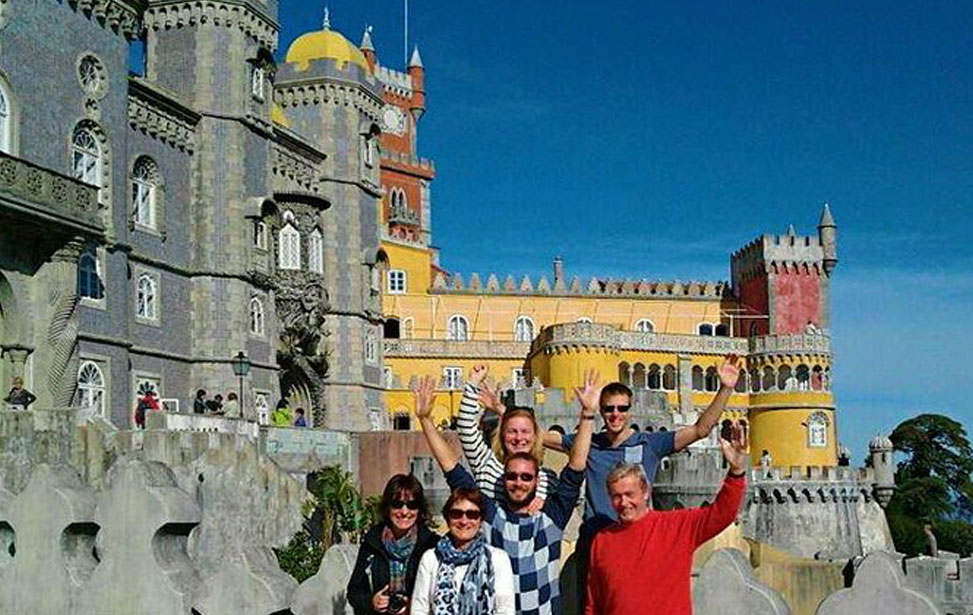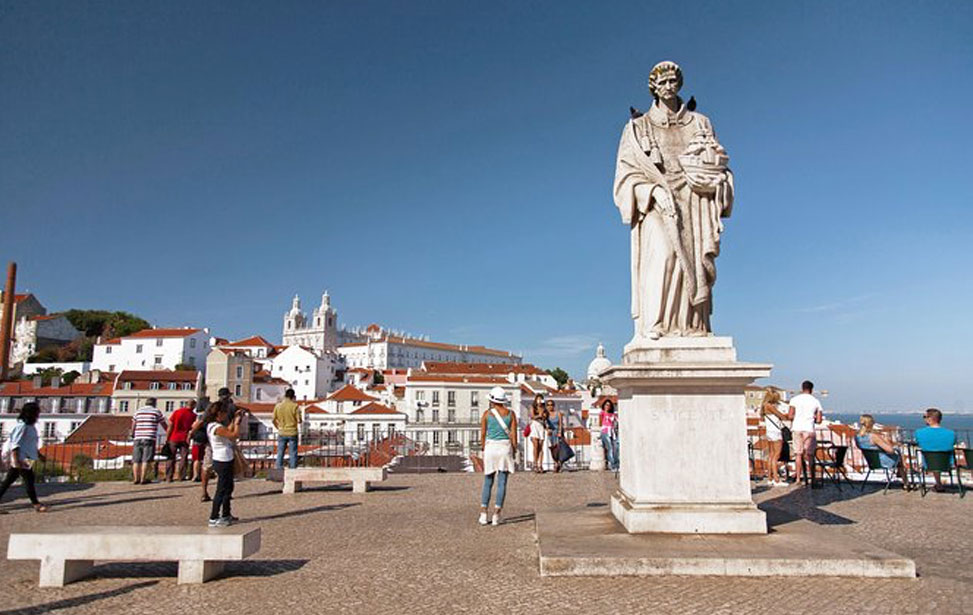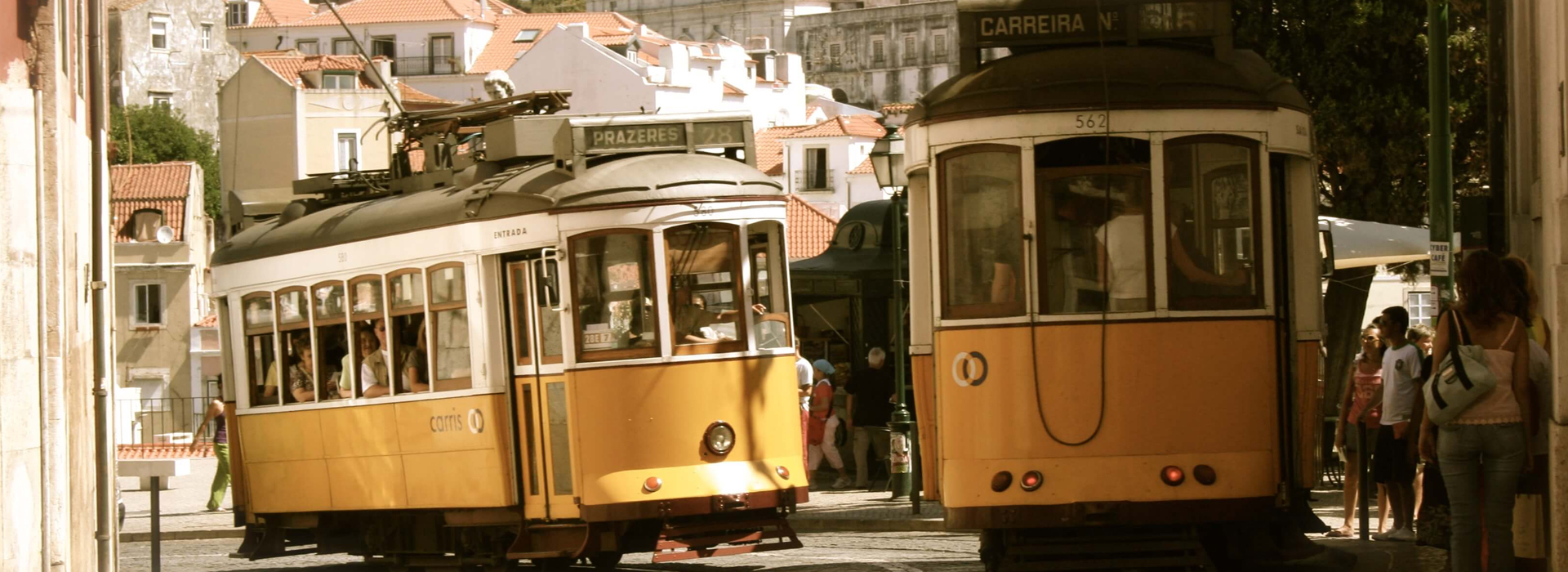
Tram 28 (Eléctrico 28)
Lisbon's Tram 28 offers a truly memorable and unique sightseeing experience, taking you on a nostalgic journey through the city's most notable sites. These vintage trams, affectionately known as "Remodelado" trams, date back to the 1930s and were inspired by the classic J. G. Brill American streetcars. Carris, Lisbon's transport operator, upgraded 45 trams, preserving their iconic status and immense popular appeal.The charm of these trams lies in their small profile, which makes them perfect for navigating the narrow streets and tight corners of Lisbon's oldest districts, such as Alfama and Bairro Alto. As you ride along, you'll find yourself just inches away from the walls of picturesque houses, offering an intimate glimpse into the heart of the city.
Tram 28's route is a rollercoaster of culture, passing by must-see landmarks such as the Sé (Cathedral), São Jorge Castle, and the scenic viewpoint Miradouro das Portas do Sol. The journey is an exciting mix of rickety turns and bone-shaking rides, adding to the adventure.
While five tram routes remain an integral part of Carris' public transport network, Tram 28 stands out as the most beloved by tourists. So, hop aboard for an unforgettable Lisbon experience and watch the city come alive from a whole new perspective!
The Route
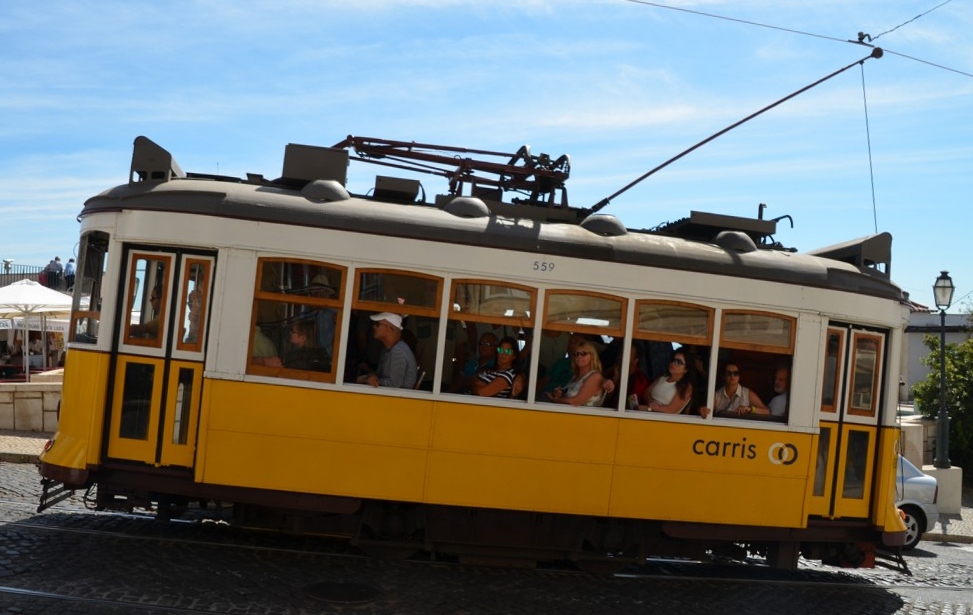
Tram #28

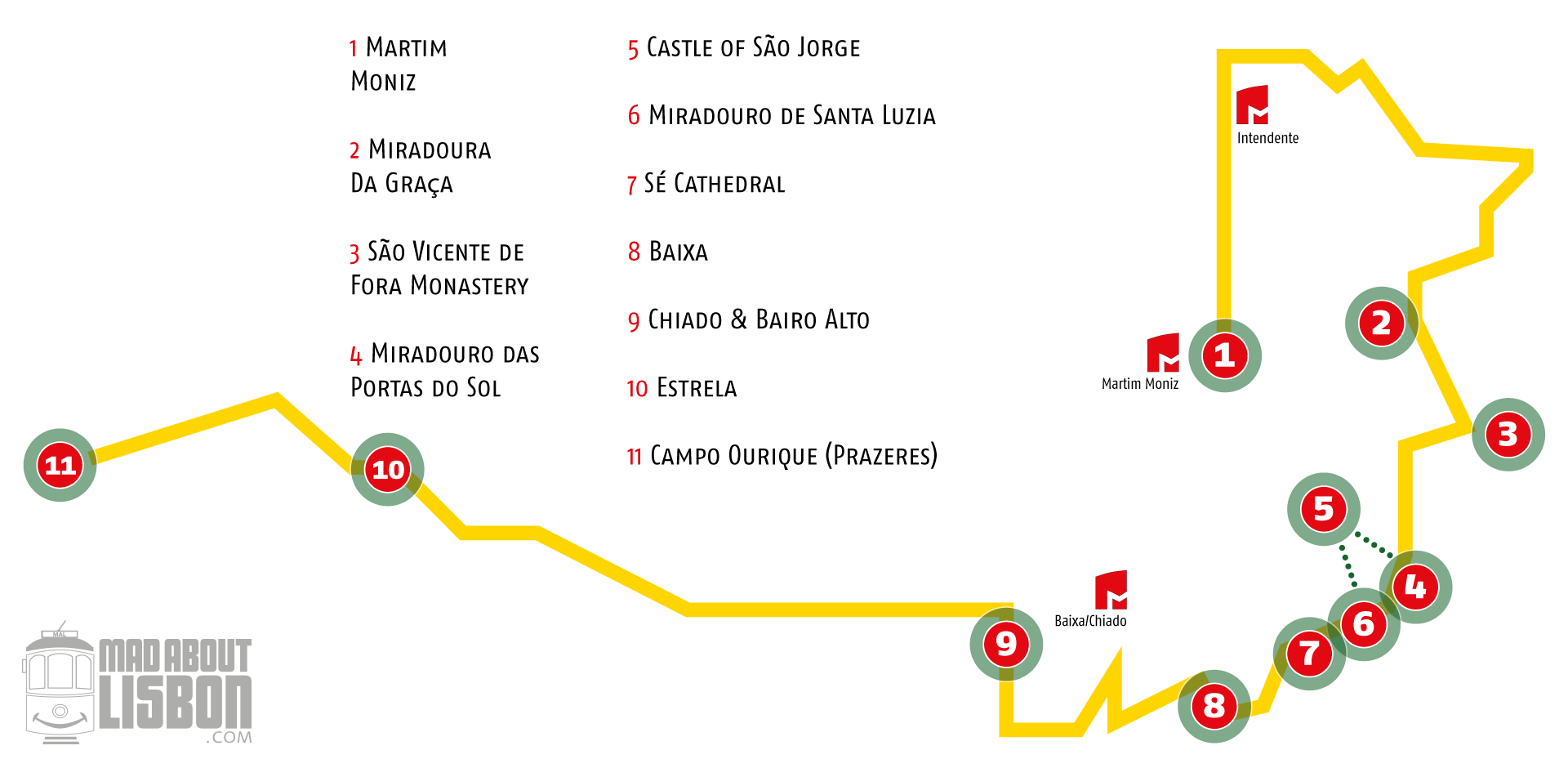
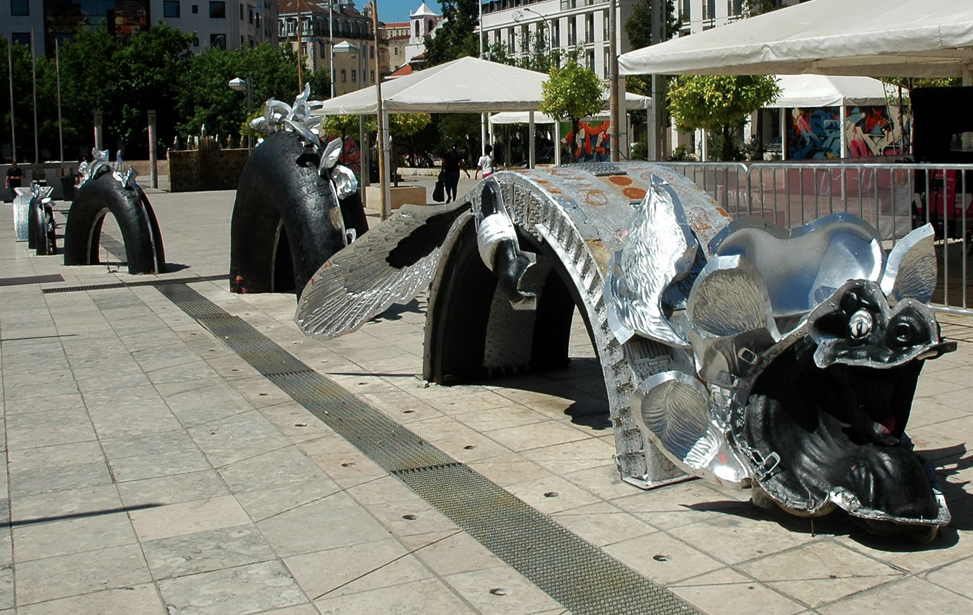
1
Praça Martim Moniz
Over the last decade or so, the Praça Martim Moniz has been renovated and has re-invented itself into Lisbon's multi-ethnic hub, if not a little ostentatiously so. Here you'll find kiosks offering flavours that reflect the neighbourhood's various ethnic groups, such as Chinese, Indian, African and Brazilian. On weekends it hosts the increasingly popular Fusion Market (Mercado de Fusão), along with accompanying live music.
In 2012, the Chinese year of the dragon, a giant dragon statue was installed in the centre of the square and is constructed from old mobile phones and computers. It is also home to the start/end terminus of the Tram 28 found at the southern end of the square close to Praça da Figueira square. On the northern side of Praça Martim Moniz you'll find a metro station where you can by Carris tickets. See Below…

2
Graça & Miradoura Da Graça
Perched on the hillside overlooking downtown Lisbon, the district of Graça is one of Lisbon's oldest. Its narrow lanes are brimming with bakeries (Pastelarias) and restaurants, rarely visited by tourists. A short walk from the tram stop in Graça, along with the Largo da Graça, past the convent, you'll come across a delightful terraced garden with breathtaking views of the castle and downtown Lisbon.
Officially called Sophia de Mello Breyner Andresen, this viewpoint is colloquially known as the Miradoura Da Graça. Here too for your refreshment is an open-air café. The terrace's relaxing atmosphere has become a favourite haunt for young locals, especially in the late afternoon when the sun sets. During the summer, it remains open well into the night.
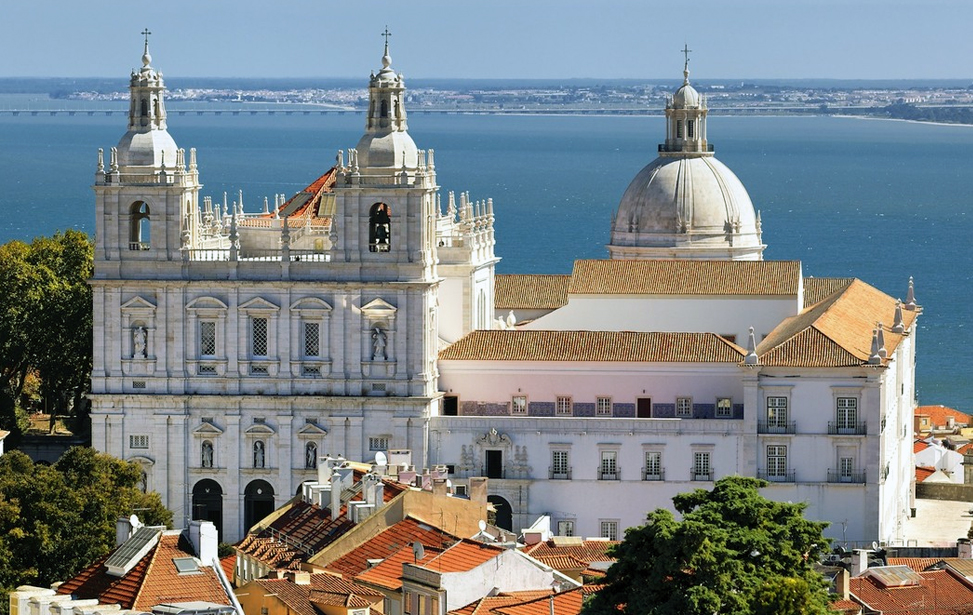
3
São Vicente de Fora Monastery
Construction started at the request of Portugal's first king, Afonso Henriques. In 1147 he fulfilled his vow to erect Christian churches on the sites where crusaders died during the conquest of Portugal from the Moors. It was rebuilt in the 16th century, and once more following the 1755 earthquake, after its dome fell crashing through the roof. However the Monastery today is still considered one of the finest mannerist buildings in Lisbon and the whole of Portugal. During the 19th century, the monarchs of the Braganza dynasty used the church as their final resting place.| See More [ ► ]
Next door on Tuesdays and Saturdays you'll find the legendary market, Feira da Ladra with an eclectic mix of housewares, clothing, antiques and media.
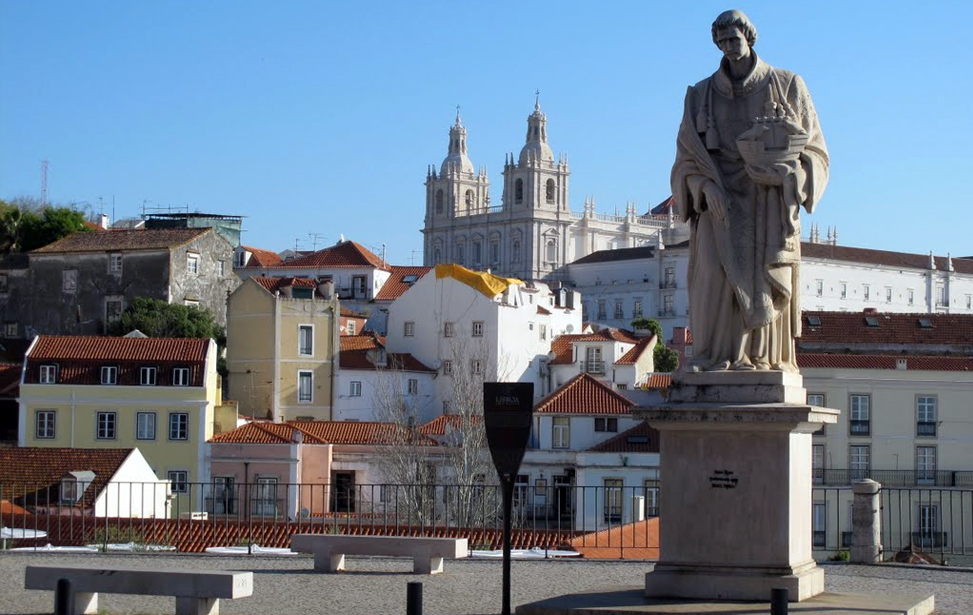
4
Miradouro das Portas do Sol (Gates of the Sun)
One of Lisbon's most famous views can be seen from the Miradouro das Portas do Sol See More [ ► ], a true feast for the eyes and your camera. it's overlooks the west of the city above the red tiled houses of the Alfama, the São Vicente de Fora monastery all the way down to the river. This terrace is manned by the statue of Lisbon's patron saint St. Vincent clutching a boat and two ravens, the heraldic symbols of the city. You'll find plenty of cafés in close proximity here and places for lunch. Here too is a good place to alight for the São Jorge Castle or to walk down hill to the Alfama district.
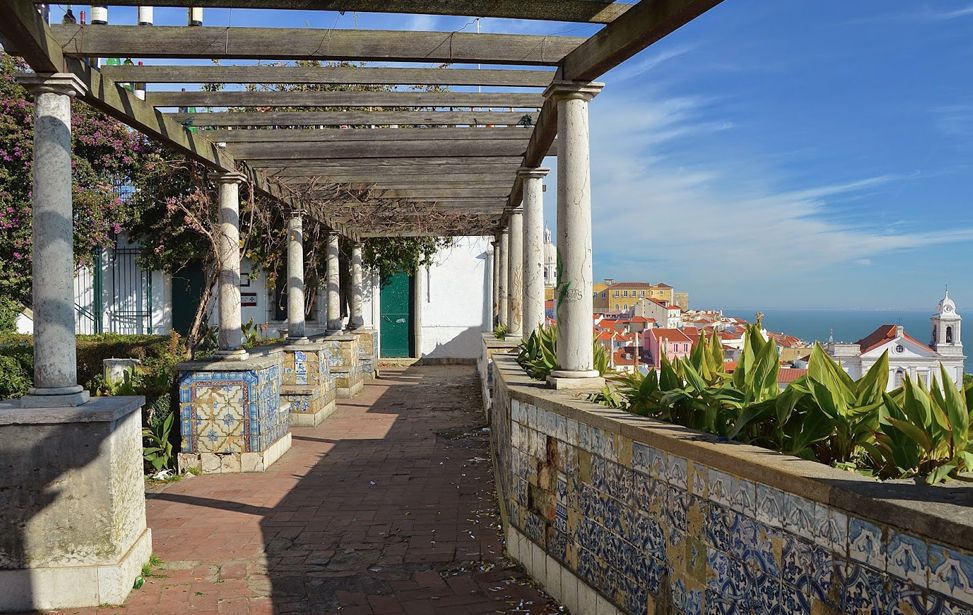
6
Miradouro and Igreja de Santa Luzia
Up the hill from the Sé (Cathedral) there is the great lookout point or Miradouro of Santa Luzia, named after the church which shares the gardened terrace. The Miradouro delivers great views of western Lisbon and the Tejo (Tagus) river, also offering a respite for those walking up the hill on the way to the Castle. The Igreja de Santa Luzia church has amazing panels of azulejos adorned on its east wall, one showing the old Palace Square before the 1755 earthquake and the other, shows the Christian siege of the castle in 1147.
See More [ ► ]
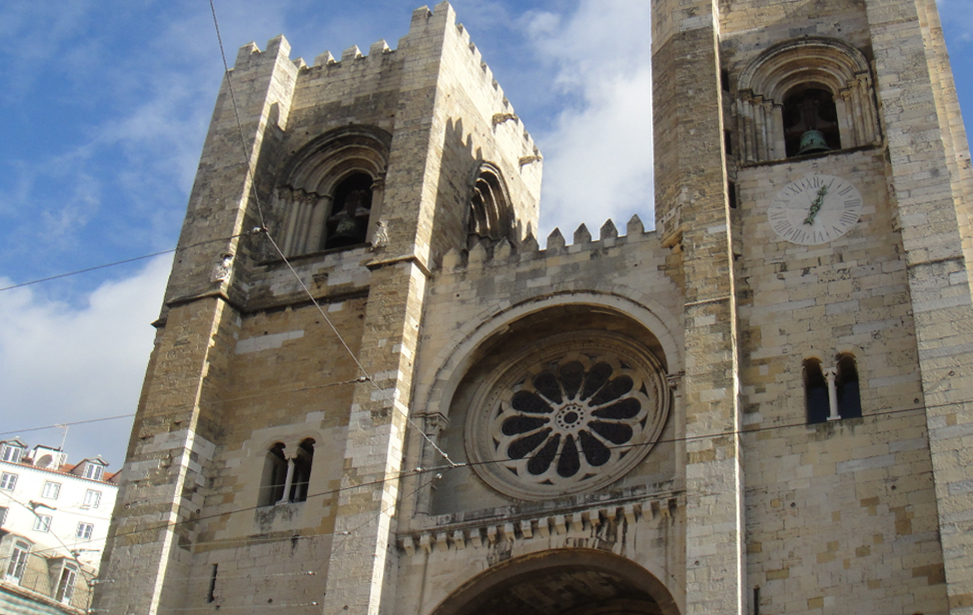
7
Lisbon Cathedral (Sé)
Lisbon has been the seat of a bishopric since the 4th century AD, and Christians were allowed to live and worship during the Moorish occupation. When the city was conquered by Alfonso's troops in the 12th century an English crusader named Gilbert of Hastings was placed as bishop. A new cathedral was built on the site of the city mosque. Disaster struck in 1755 when a devastating earthquake destroyed much of the building. It was initially rebuilt in styles fashionable at that time, the neoclassical and Rococo. Renovations in the early 20th century have stripped much of the neoclassical decoration from the exterior in the hope to restore a medieval appearance. See More [ ► ]
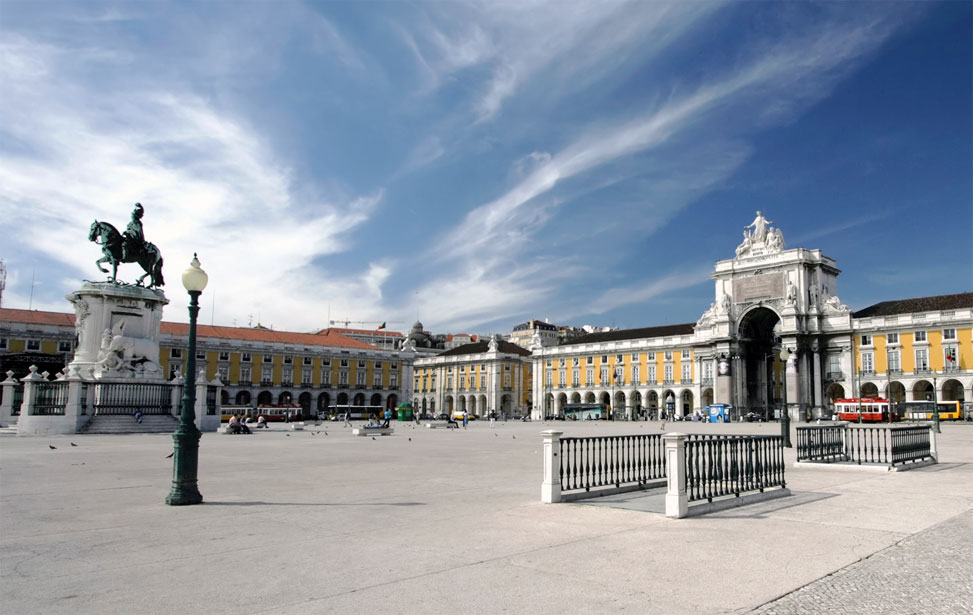
8 & 9
Baixa District
Alight here and head south, towards the river, through the Rua Augusta Arch into the mighty Praça do Comércio square. Alternatively head North into the "Pombaline" or neoclassical streets of the Baixa district full of interesting shops, various attractions, also the Praça da Figueira and Rossio Square. See More [ ► ]
Chiado & Bairo Alto
Chiado is the cosmopolitan heart of Lisbon where all the top retailers want to have a shop window along with more traditional shops, cafés, a number of art galleries, theatres, pottery workshops as well as bookshops. This vibrancy district is very popular with the local population and a draw for students, artists, poets and other bohemians. A little further on from Chiado is the Bairo Alto which come alive at night when it's ancient streets and bars are full of people having a great time.
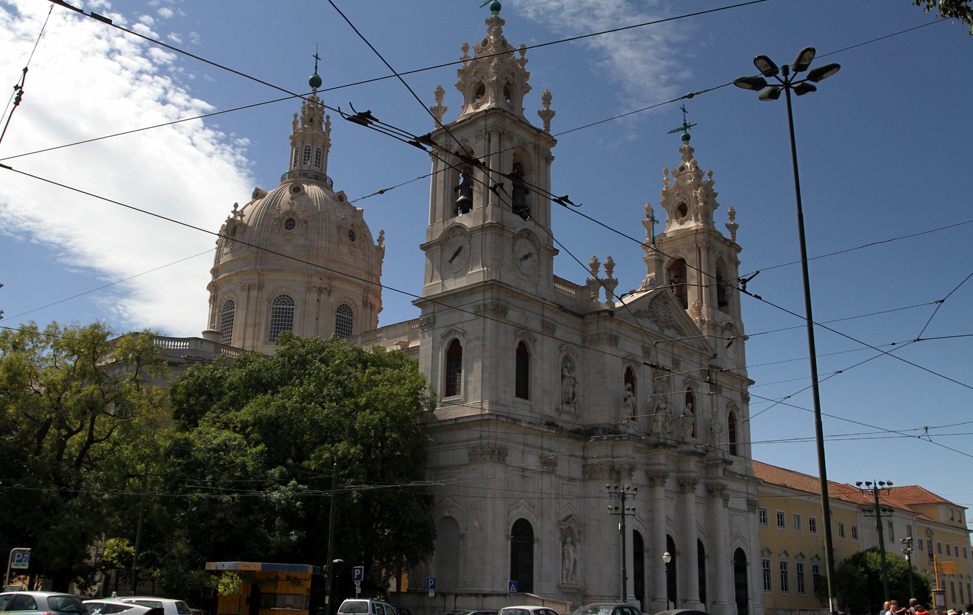
10
Estrela
The district of Estrela lies just over a mile west of the Bairro Alto and Chiado districts. The main draw for tourists here is the wonderfully beautiful Neoclassic Basílica da Estrela and the Jardim da Estrela gardens. The Tram 28 helpfully obliges by stopping in-between the two. The basilica was built on the order of Queen Maria 1st to give thanks for the birth to José, her firstborn. The sad irony is the heir to the throne died two years before the completion of the Basilica and the Queen herself is buried here. In the shadow of the basilica opposite is the Jardim da Estrela, which is a fantastic quiet refuge and an ideal space for a packed lunch if you don't want to take advantage of the numerous cafés and restaurants close by.
The Cemitério dos Ingleses (English cemetery) on the Rua de São Jorge was created in 1717 and is the resting place, amongst many other British citizens, of Henry Fielding the author of Tom Jones.
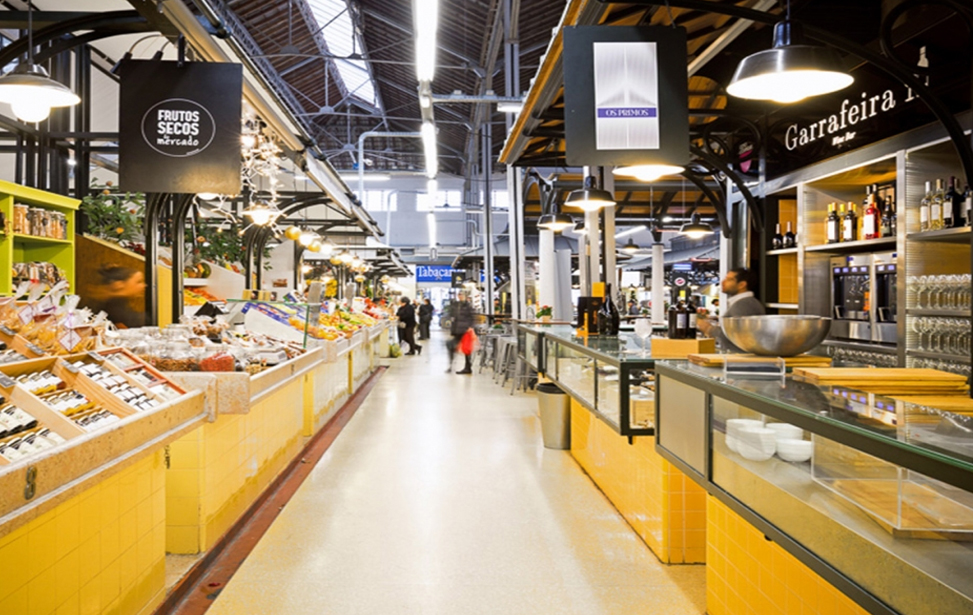
11
Campo Ourique (Prazeres)
Former agricultural land Campo Ourique was converted into a residential neighbourhood in 1879. It was designed on a grid system of streets. The district is a mishmash of late-19th-century style architecture including some nice examples of Art Nouveau, along with less imaginative buildings from the 20th century. It's a popular district to live in Lisbon and it has maintained its traditional indoor market since 1934. The market is a draw for those who want to buy fresh vegetables, fruit, fish and meat as well as deli products and wine. As the day draws to an end people flock to take advantage of the many gourmet food stalls along with thirst-quenching bars.
Lisbon's version of Paris's Père Lachaise graveyard, the Prazeres Cemetery is the final resting place for some of Portugal's finest personalities, including actors, singers, writers, painters and television presenters. If you're not squeamish about such places it's worth a visit. This is where the most important families in Lisbon hired architects and sculptors to create their mausoleums and tombs. As such you can even consider the cemetery to be an open-air museum. With a variety of paths to follow, with an amazing view of Lisbon, the bridge and the river. You can visit by yourself or join a guided tour.
NAVEGANTE TRAVEL CARD
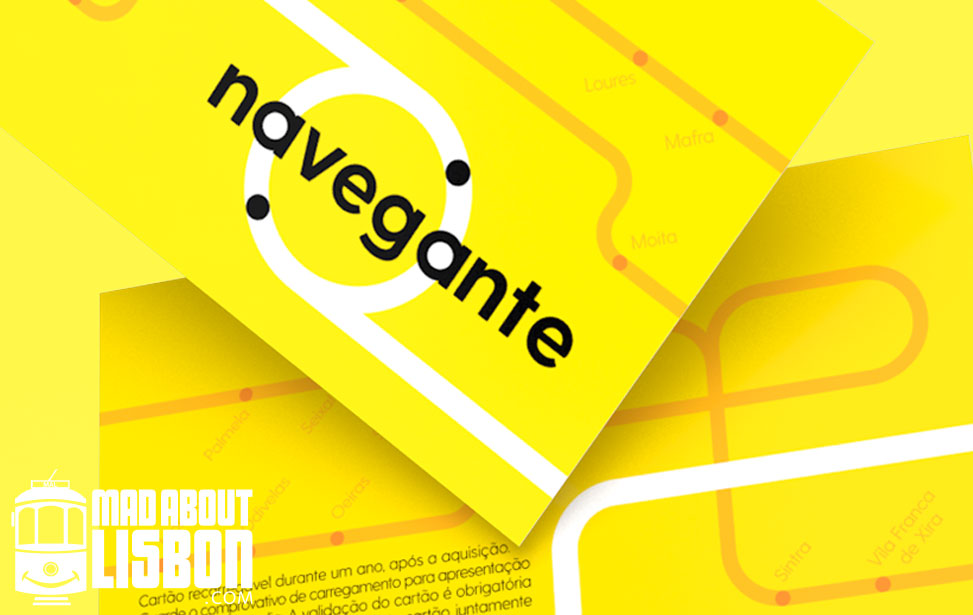
The Navegante® card
With its easy-to-use features and flexibility, the Navegante® (formerly Viva Viagem) card simplifies your travel experience, enabling you to navigate Lisbon's bustling streets with ease. Additionally, travellers can enjoy discounted fares by purchasing day passes or multi-day passes, providing excellent value for money. The Navegante® occasional card costs €0.50 and can be reloaded unlimitedly during one year after purchase.
You can use Navegante® card on:
• Carris Buses, Trams, Funiculars and Elevador da Santa Justa
• Metro all services
• CP Urban trains: Cascais, Sintra & Setúbal lines
• Transtejo Ferries: Cacilhas, Trafaria & Seixa/Barreiro/Montijo services


 Lisbon Card Discounts
Lisbon Card Discounts



